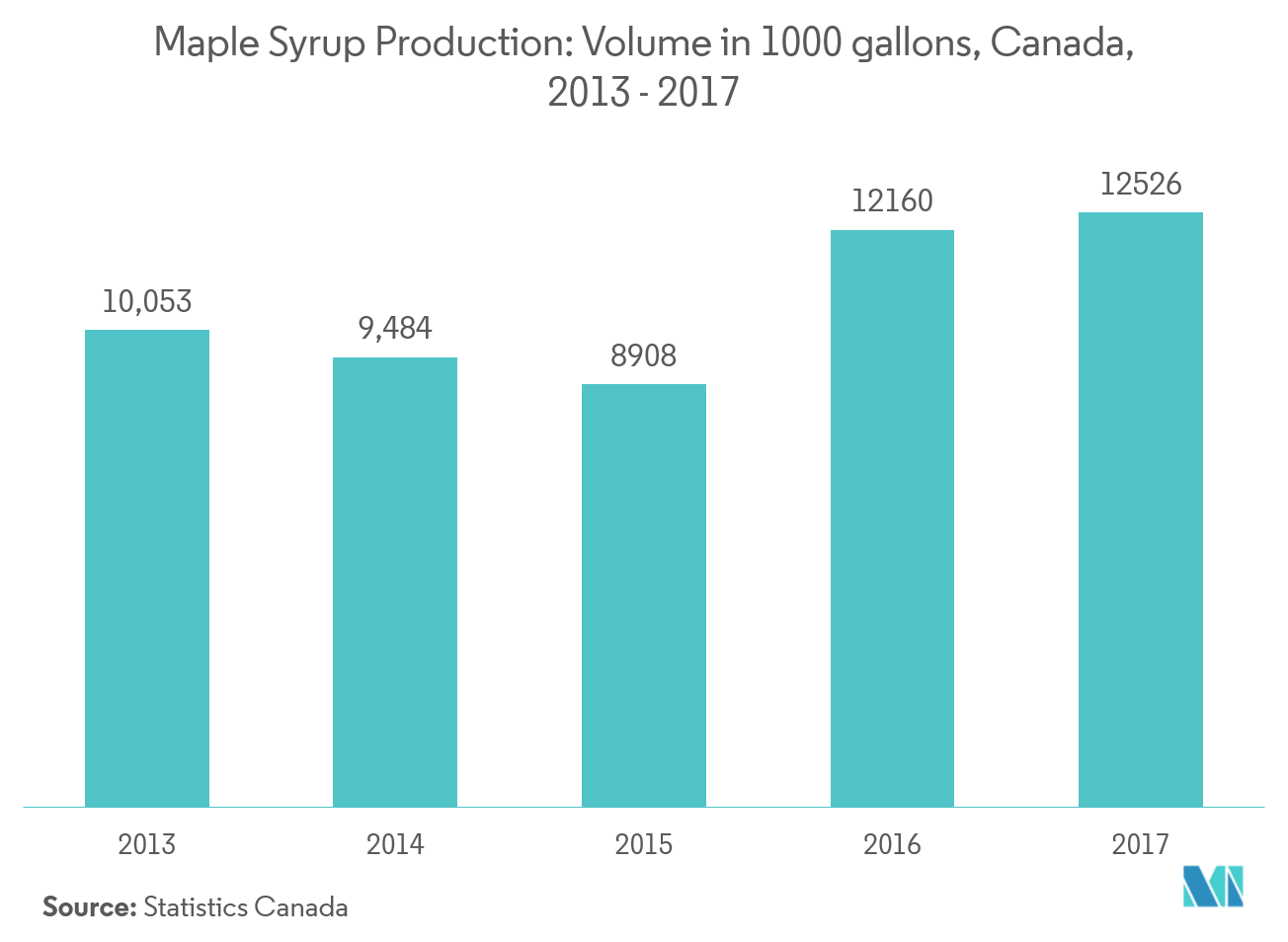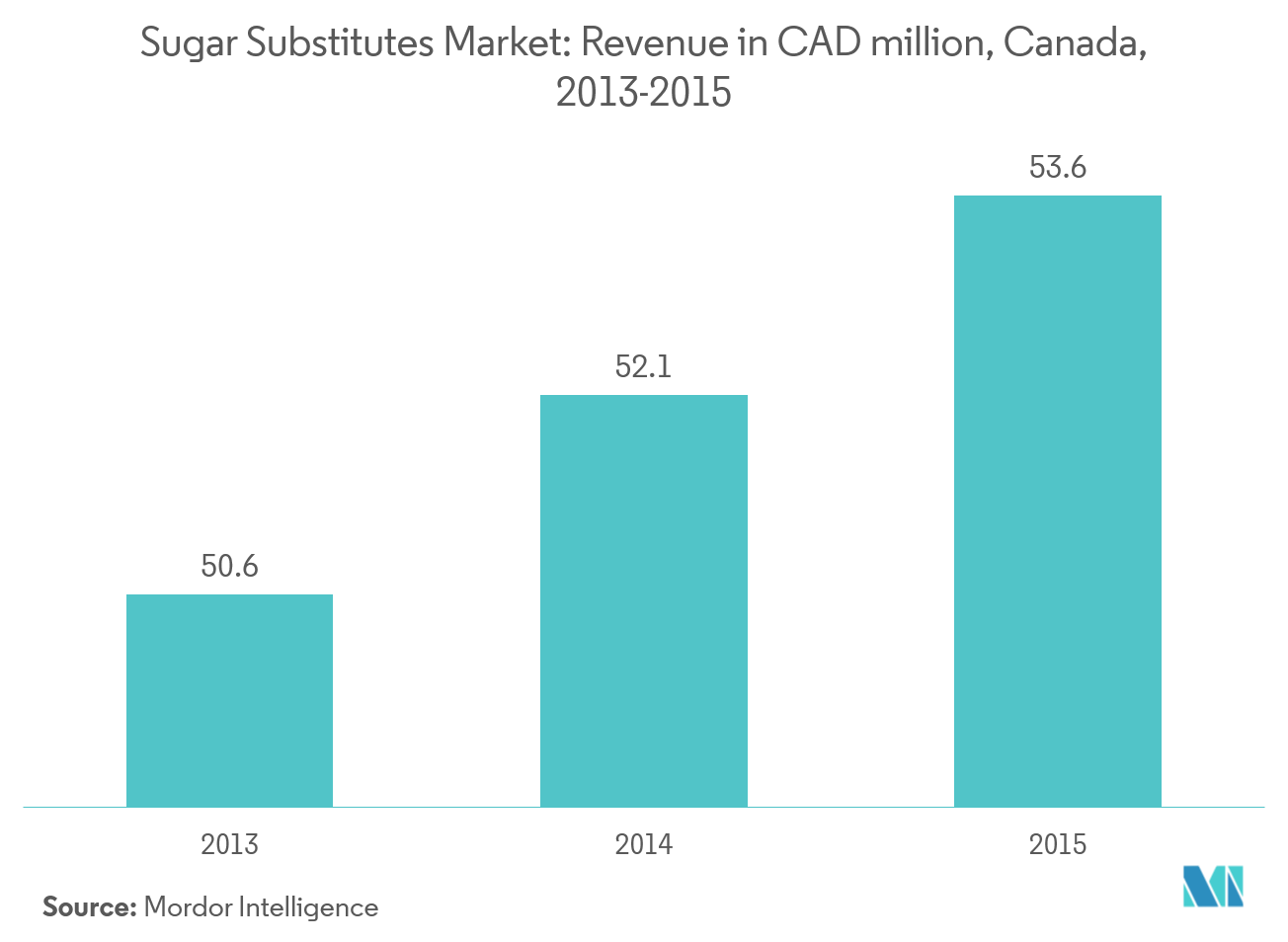Market Trends of Canada Food Sweetener Industry
This section covers the major market trends shaping the Canada Food Sweetener Market according to our research experts:
High Production of Maple Syrup
Maple syrup produced in Canada is increasingly being utilized as an ideal alternative to sugar, in a variety of foods, such as desserts and baked goods. The Canadian maple syrup industry accounts for a major share of the global maple syrup production and the country remains the leading global producer of maple syrup-based products. However, Canada’s market share has witnessed a decline in the market in 2017, due to rising competition from the United States. The Federation of Quebec Maple Syrup Producers and Vermont Maple Sugar Makers' Association are the two major cartels producing a major chunk of maple syrup. However, the stringent quota system and black marketing of maple syrup are hindering the overall market growth.

Growing Demand for Sugar Substitutes
Sugar substitutes are food additives that are used to duplicate the effect of sugar in taste, usually with less food energy. The majority of sugar substitutes approved for food use are artificially-synthesized compounds. However, some bulk natural sugar substitutes are known, including sorbitol and xylitol, which are found in berries, fruit, vegetables, and mushrooms. Sugar substitutes like stevia, aspartame, sucralose, neotame, acesulfame potassium, and saccharin. are approved by USDA and are categorized under GRAS in the North American region. Aspartame, a low-calorie artificial sweetener, has been permitted for use as a food additive in Canada since 1981. It is used in a number of foods, including soft drinks, desserts, breakfast cereals, and chewing gum. It is also available as a table-top sweetener.


